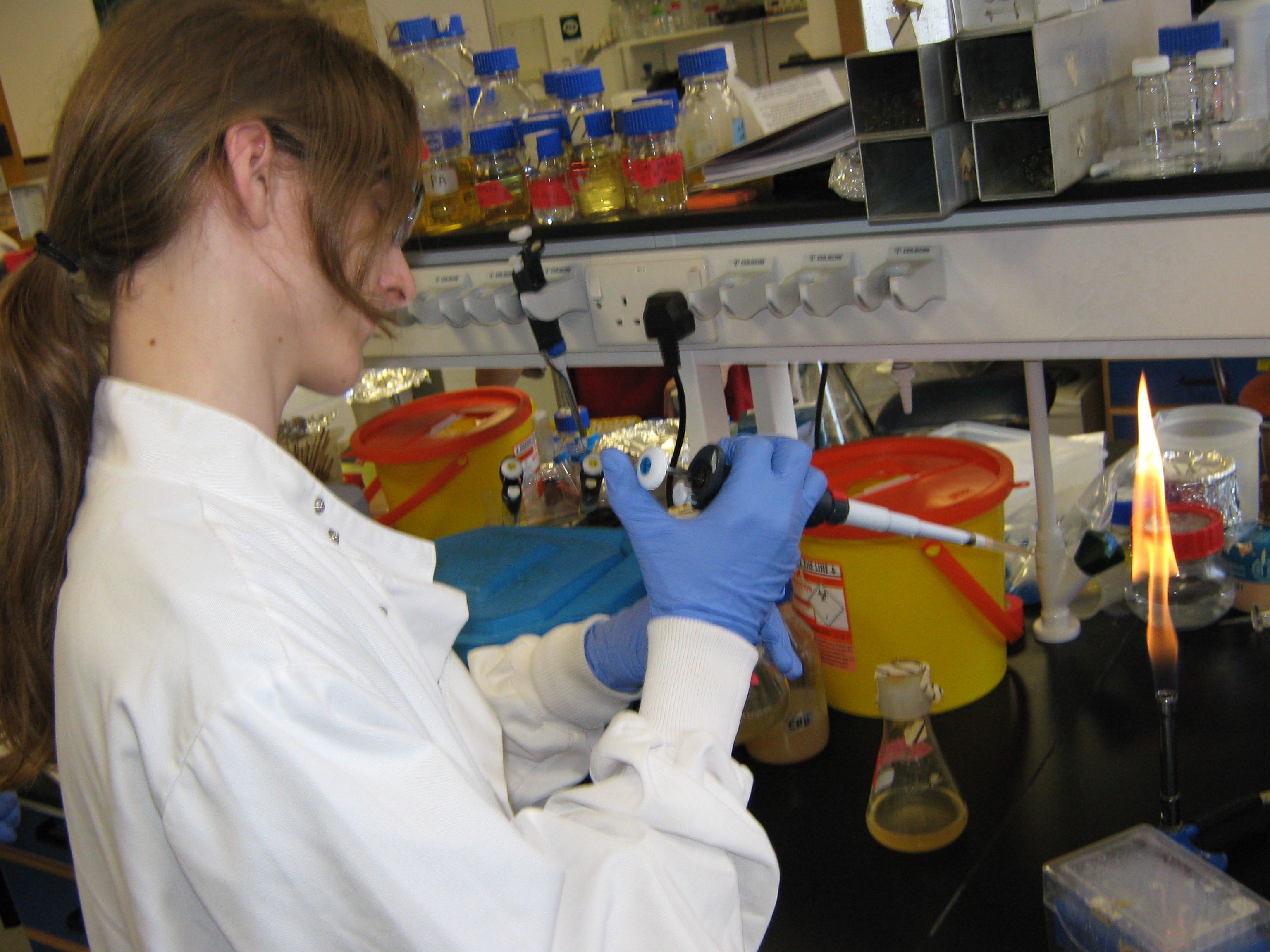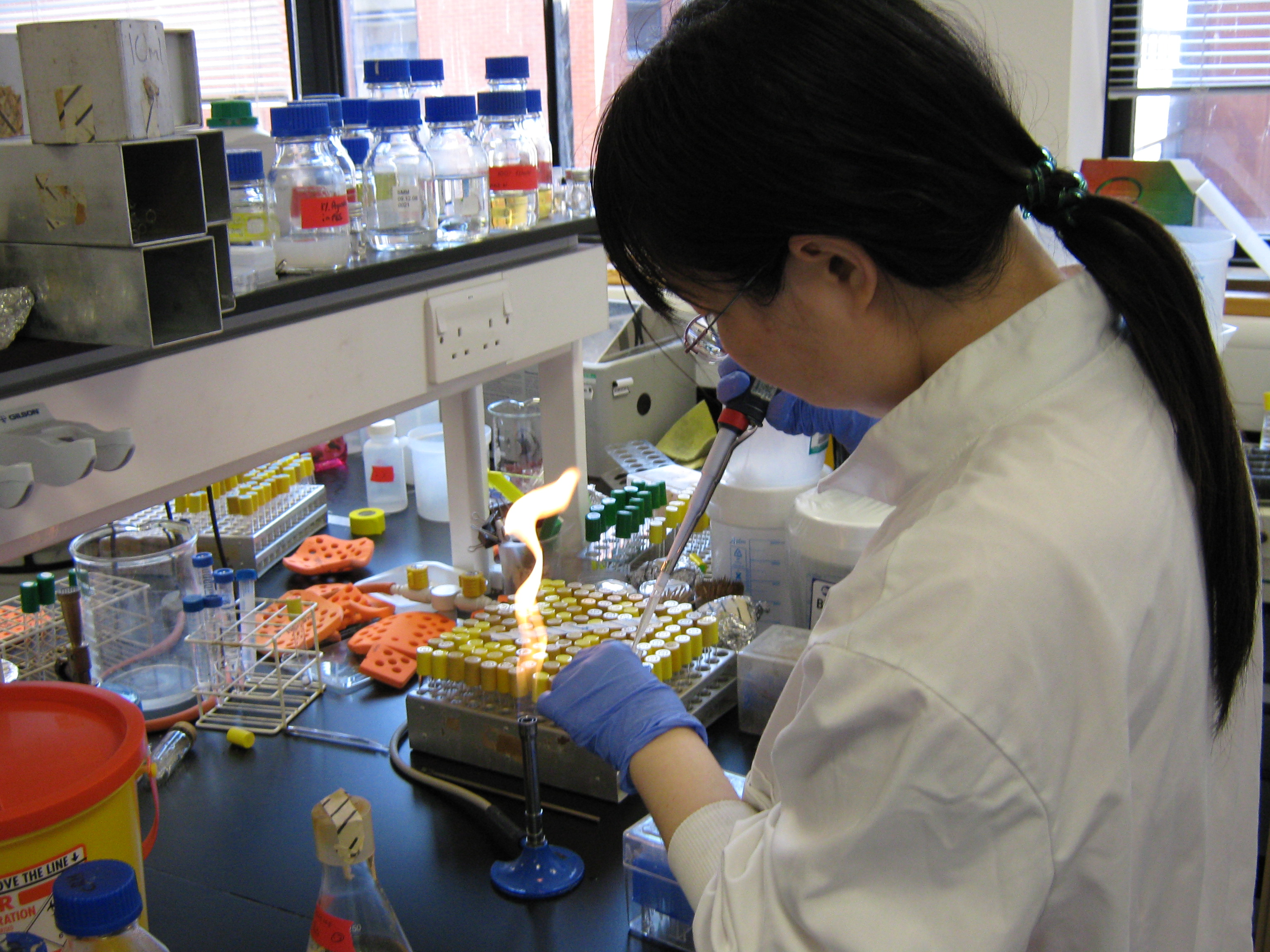Team:Newcastle/IntroductoryLabwork/2 July 2009
From 2009.igem.org
(Difference between revisions)
(→Lab session: 2nd July) |
(→Lab session: 2nd July) |
||
| Line 28: | Line 28: | ||
* The next step was to transfer the three cultures into a centrifuge and allow them to spin for 10 minutes, at a speed of 8,000 rpm and at a temperature of 4 degrees celsius. Because balance is required in a centrifuge (i.e. even numbers), we only used two of the tubes. | * The next step was to transfer the three cultures into a centrifuge and allow them to spin for 10 minutes, at a speed of 8,000 rpm and at a temperature of 4 degrees celsius. Because balance is required in a centrifuge (i.e. even numbers), we only used two of the tubes. | ||
| - | [[Image:Team Newcastle iGem 2009 - Lab 02-07-09 no 3.JPG|thumb|right|Hanny preparing pre-culture sample]] | + | [[Image:Team Newcastle iGem 2009 - Lab 02-07-09 no 3.JPG|200px|thumb|right|Hanny preparing pre-culture sample]] |
Revision as of 18:21, 25 September 2009
Lab session: 2nd July
- 1ml of preculture (which had been left overnight) was taken and used to inoculate 200ml of LB (standard bacterial broth). The flask which contained the mixture was then placed into the shaker, which both incubated the culture at 37 degrees Celsius and constantly shook the flask.
- Once 2 hours had elapsed, the optical densities of the cultures were taken using a spectrophotometer. This was to determine whether the cells had grown and if they had, where the cells were in their growth phase. For competency, E.coli need to be in early log phase. The results were as follows:
| Sample | Absorbance (nm) |
|---|---|
| 1 | 0.346 |
| 2 | 0.443 |
| 3 | 0.450 |
- The next step was to transfer the three cultures into a centrifuge and allow them to spin for 10 minutes, at a speed of 8,000 rpm and at a temperature of 4 degrees celsius. Because balance is required in a centrifuge (i.e. even numbers), we only used two of the tubes.
- Once spun, the supernatant was removed and the pellet was resuspended in calcium chloride, which had been placed in a fridge since the solution was made. The concentration of the calcium chloride was 0.1M and the volume was 40ml.
- The cells emersed in the calcium chloride were then held in ice for 40 minutes.
- Once 40 minutes was complete, the cells were once again centrifuged at a speed of 8,000 rpm and at the temperature of 4 degrees celsius. After being spun, the supernatant was removed and the pellet was resuspended in 1ml calcium chloride again. This solution was again pre-chilled in the fridge, was again 0.1M but only 1ml was applied this time round.
- 50% glycerol was then applied to the mixture. Because the concentration of the glycerol to cell mixture was supposed to be 10%, we applied 0.ml to 0.9ml of cell mixture.
- The resulting mixture was then placed into 50 microfuge tubes (each with a capacity of 100 microlitres) with these tubes being placed into a flask of liquid nitrogen. This process shock-freezes the E.coli cells.
- After being given a few minutes to confirm freezing of the cells, the tubes were immediately scooped out of the flask and transferred immediately into a -80 degrees celsius freezer for storage.
News
Events
- 20 – 21 June 2009 - Europe workshop (London)
- 23 – 24 June 2009 - UK iGEM meetup (Edinburgh)
- 23 October Practice Presentation (Newcastle)
- 23 October T-shirts are ready
- 27 October Practice Presentation (Sunderland)
- 27 October Poster is ready
- 30 October – 2 November 2009 - Jamboree (Boston)
Social Net
- Newcastle iGEM Twitter
- [http://www.facebook.com/home.php#/group.php?gid=131709337641 Newcastle on Facebook]
- [http://www.youtube.com/user/newcastle2009igem Newcastle Youtube Channel]
 "
"


